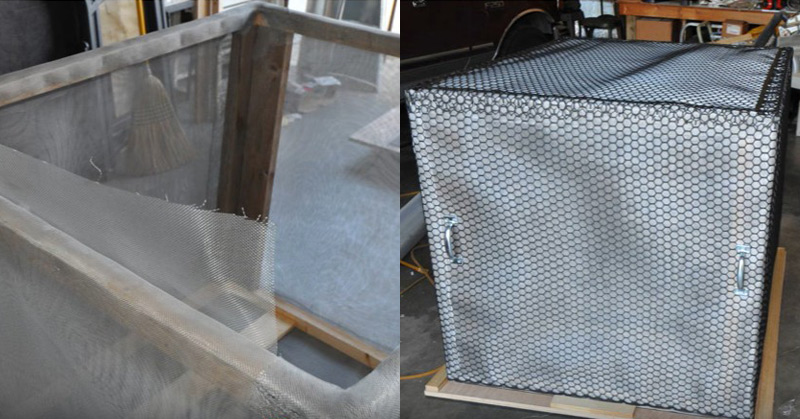In a realm increasingly reliant on tech, the need for safeguards against electromagnetic interference has never been more urgent. Faraday enclosures offer an creative solution for protecting your electronic devices from threats like EMPs, radio frequency interference, and various types of electronic disruption. Whether you are a tech enthusiast, a prepper, or simply someone who values the security of their personal electronics, grasping how to tailor a Faraday cage to fit your unique needs can be essential.
As you embark on this journey of protection, it is essential to take into account various factors, including substances, size, and shielding effectiveness. The right Faraday cage can mean the difference between a compromised device and a well-preserved one, prepared for operation when you require it. From DIY projects to premium pre-made options, the choices are vast, and each offers its own set of advantages and challenges. In this article, we will explore creative ideas for customizing your Faraday cage, ensuring that you have all the information required to ensure your electronic devices safe and sound.
Essential Aspects and Material Selections
When choosing a Faraday cage, numerous important aspects are essential to consider. To start, the shielding effectiveness is key, as it dictates how well the cage can block electromagnetic interference. Look for cages that provide a minimum 50 dB attenuation for optimal defense against a spectrum of frequencies. Additionally, assess the build quality and construction type, ensuring that the cage is securely built to maintain its reliability over time. Elements such as doors and access panels should also be well-sealed to prevent any loss of electromagnetic signals.
Choice of materials is crucial in the efficacy of a Faraday cage. Conductive metals are the most powerful materials due to their ability to conduct electricity, with copper metal, aluminium, and stainless steel being the leading materials. Copper material offers superior conductivity and corrosion resistance, making it ideal for top-quality cages. Aluminium, on the other hand is featherweight and cost-effective, making it an great selection for mobility. Steel, on the other hand, provides long-lasting strength and sturdiness, suitable for fixed installations. Considering the benefits and drawbacks of each material will help you determine the most suitable option for your specific needs.
One more aspect is the configuration and size of the Faraday cage. Depending on its purpose, the cage should be spacious enough to fit your equipment while allowing for efficient storage. For individual devices, a small form factor may be adequate, while bigger arrangements might be necessary for multiple items or critical electronics. Evaluate how the cage will integrate with your living space and whether you need a mobile setup or a fixed installation. The right material combined with considerate layout will ensure that your Faraday cage meets your defensive requirements efficiently.
Size and Transportability Factors
When selecting a Faraday cage, dimensions is a critical factor to take into account based on your particular needs. Examine the varieties of devices you plan to protect and how much room they take up. A small portable cage may be adequate for personal electronics like smartphones and tablets, while more substantial cages are required for more considerable items such as PCs or devices. Ensuring you have enough room to accommodate your gear comfortably without overcrowding is important for enhancing protection and accessibility.
Portability is another important aspect to assess, especially if you aim to travel your Faraday cage often. Featherlight materials and compact configurations can make it easier to move. If you anticipate needing to use the cage in various locations, consider options that are simple to put together and take apart. Portable Faraday bags are also a practical alternative if flexibility is paramount, allowing you to protect devices on the go.

Ultimately, your decision should weigh between the necessary size for effective protection and the ease of portability. If your focus is on crisis management, a bigger fixed Faraday cage might serve you better at home, while a more compact model could be perfect for daily use. Think about your lifestyle and the likelihood of needing to relocate your equipment when deciding the ideal size and transportability features for your Faraday cage.
Examination and Care of Electromagnetic Shielding Enclosures
To ensure your Faraday cage is functioning as designed, it's crucial to conduct routine assessments for protection effectiveness. A straightforward way to verify performance is by using a radio frequency signal generator and a radio receiver. Place a gadget inside the cage and observe if it can detect signals. If the device remains silent, your Faraday cage is successfully blocking outside signals. For added assurance, consider using a spectrum analyzer to evaluate the frequency bands that the cage can effectively shield against.
Upkeep is another critical aspect of increasing the durability and effectiveness of your Faraday cage. Frequently inspect the structure for any material damage that could undermine its shielding capability, such as rust, corrosion, or physical breaches. Ensure all joints are whole and that there are no openings in the mesh or solid walls. Cleaning the cage from time to time can also help maintain its integrity, especially if it is exposed to the environment. A well-maintained cage not only protects against electromagnetic interference but also keeps your electronics safe from other external factors.
In conclusion, appropriate storage of your Faraday cage enhances its longevity and functionality. Store RF enclosures for sale in a moist-free place, free from excessive moisture and strain. If the cage is movable, avoid stacking heavy items on it or exposing it to severe temperatures. For fixed cages, make sure to keep the surrounding area clear to avoid unexpected damage. By following these evaluation and upkeep strategies, you can ensure that your Faraday cage remains a trustworthy barrier against electromagnetic threats for a long time to come.
